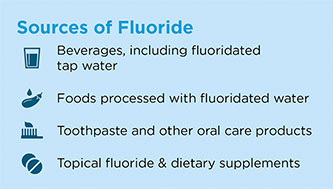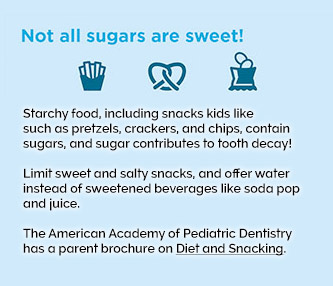What is Fluorosis?
FLUOROSIS FACTS: A Resource for Parents and Caregivers (English) (Spanish)
Fluoride is an important mineral for all children. Our mouths contain bacteria that combine with sugars in the foods we eat and the beverages we drink to produce an acid that harms our teeth. Fluoride protects our teeth. But too much fluoride can cause something called dental fluorosis.
What is dental fluorosis?
Dental fluorosis is a slight change in the look of the teeth, usually in the form of very faint white markings. It normally does not affect the function of the teeth or cause pain.
What causes dental fluorosis?
Most fluorosis is the result of consuming too much fluoride before the age of 8, while permanent (adult) teeth are still forming. Be sure kids learn to spit out toothpaste, not swallow.
How much fluoride does my child need to protect their teeth?
Children who consume a typical diet, drink fluoridated water, and use fluoridated dental products properly will get the fluoride they need for healthy teeth.
How do I know if my child has dental fluorosis?
Since there are many possible causes of changes in the appearance of the teeth, you may want to see a dental professional to have the teeth checked for fluorosis or other issues.
For more information, please see the Centers for Disease Control and Prevention (CDC) on Dental Fluorosis.
How Do I Protect My Child’s Teeth Without Causing Fluorosis?
Here are three things you can do:
1. Make sure kids use dental products as recommended.
- Kids should use fluoridated toothpaste twice a day (a “smear” for children under 3 and a “pea-sized” amount for children older than 3.)
- Children under the age of 6 should not use mouthwash and mouthrinse.
- Make sure kids know to spit, not swallow, excess toothpaste.
2. Make sure your child drinks water with fluoride.
- To check if your local water is fluoridated, see the CDC’s My Water’s Fluoride and Private Well Water & Fluoride websites.
- If your children do not drink water with fluoride, ask your doctor if they need a prescribed fluoride supplement.
3. Start regular visits to the dentist by your child’s first birthday.
- If you do not have a dentist yet, your child’s doctor can refer you to one. The doctor can also check your child’s teeth, talk to you about taking care of their oral health, and make sure they are getting enough fluoride.



